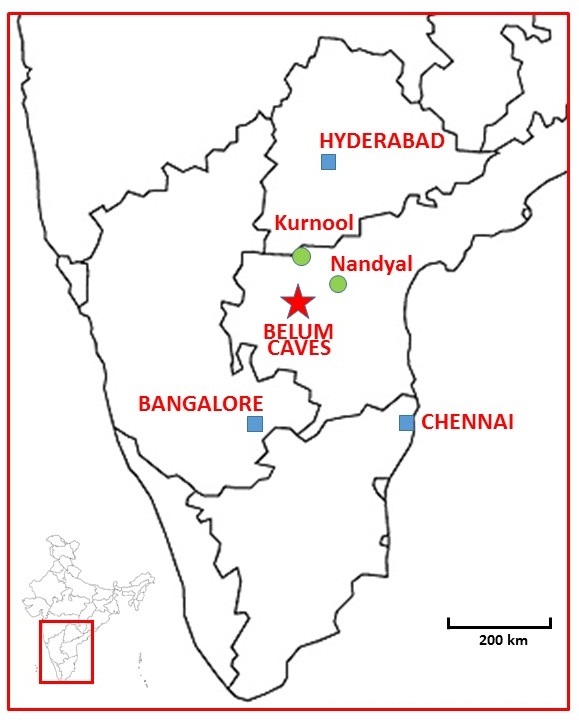Belum Caves Festival
Why in News
Andhra Pradesh Government will be hosting the Belum Caves festival in January 2020 to popularise the Belum caves.
- The name ‘Kandanavolu Sambaralu’ has been proposed for the festival. Kandanavolu was the ancient name of Kurnool district.
Key Points
- Location: Belum Caves, also known as Belum Guhalu in Kurnool district of Andhra Pradesh is the second-longest cave in the Indian subcontinent open to the public.
- The longest natural cave in the Indian subcontinent is Krem Liat Prah caves in Meghalaya.
- Formation: The cave is more than a thousand year old, and was formed by the constant flow of underground water over a period of time.
- Geographical Features: These caves are renowned for their speleothem structures (Speleothems are secondary mineral deposits formed in a cave), such as stalactite and stalagmite formations.
- Historical Background: The caves were occupied by Jain and Buddhist monks many centuries ago. The presence of 4500 years old vessels from the pre-Buddhism era ensures the same.
Stalactites and Stalagmites
- Stalactites hang as icicles of different diameters. Normally they are broad at their bases and taper towards the free ends showing up in a variety of forms.
- Stalagmites rise up from the floor of the caves. In fact, stalagmites form due to dripping water from the surface or through the thin pipe, of the stalactite, immediately below it.
- The stalagmites and stalactites eventually fuse to give rise to columns and pillars of different diameters.